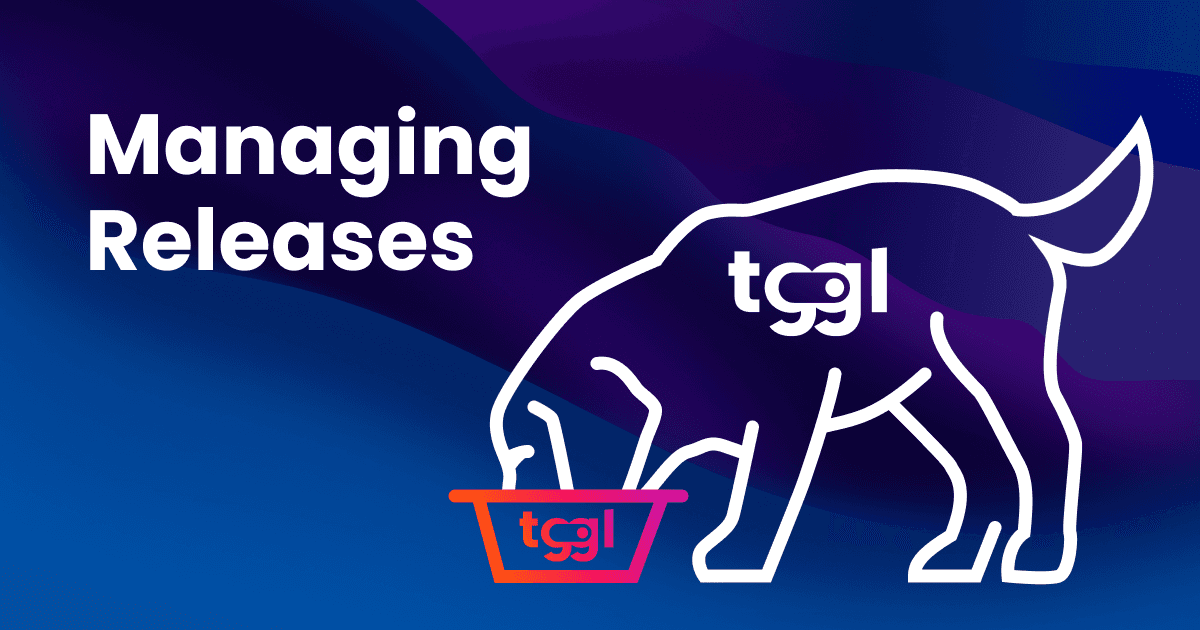Unlock the power of feature flags: 6 best practices you need in 2025

Feature flags are changing the game for development teams, helping them roll out new features faster, experiment safely, and keep things running smoothly in production. But without a solid plan, things can get messy fast—flags piling up, technical debt sneaking in, and teams losing track of what’s live.
To get the most out of feature flags in 2025, it’s important to follow a few key best practices. In this article, we’ll walk you through 6 essential tips that will help your team stay on top of flag management, avoid common headaches, and keep your deployments efficient and safe.
Plus, we’ll show you how Tggl’s features can make it all easier, from tracking flag usage to cleaning up old flags when they’re no longer needed.
1. Define the purpose and expected outcomes for each flag
Every feature flag should have a clear reason for being created. Whether it’s for a gradual rollout, A/B testing, or toggling a hotfix, knowing why you’re adding a flag is the first step to using it effectively. Without a defined purpose, you’re more likely to lose track of flags or leave them lingering long after they’re useful.
Pro Tip: Before creating a flag, document its purpose, owner, and what needs to happen for it to be turned off or removed. This simple step will save you a lot of headaches down the road.
How Tggl helps: Tggl offers a set of tools to keep your flags organized and purposeful. You can use Tags to categorize flags based on their type or use case, assign each flag an Owner, and add detailed Descriptions to clarify its purpose. This helps everyone on the team stay aligned and ensures that no flag is left unmanaged.
2. Limit flag scope to prevent long-term technical debt
One of the biggest risks with feature flags is that they hang around too long, becoming “zombie flags” that clutter your codebase and cause confusion. The trick is to limit the scope of each flag—whether it’s tied to a specific feature or a temporary experiment—and plan for its removal as soon as it’s no longer needed.
Pro tip: Set an expiration date for each flag, or at least make it part of your regular sprints to review and clean up old flags.
How Tggl helps: Tggl makes it easy to classify a flag as either permanent (for cases like a kill switch) or temporary, helping you better manage which flags need regular review and which can stay indefinitely. With Tggl’s Technical Debt Management, you can track how long each flag has been active and get reminders when it’s time to clean up temporary flags, ensuring your codebase stays clutter-free.
3. Enforce a strong governance model for flag creation and management
Feature flags can be powerful, but without proper controls, they can quickly cause chaos. Having a solid governance model ensures that only the right people have access to create, modify, or activate feature flags. This prevents mistakes, such as rolling out an incomplete feature or exposing users to untested code.
Pro tip: Set up approval workflows for flags, especially in production environments. Make sure each flag is assigned to a specific team member who is responsible for its management.
How Tggl helps: Tggl's Audit Log tracks every change made to a flag, including who made the change and when. This transparency ensures accountability and gives your team full visibility over every flag-related action. Tggl also offers a Reviews feature that allows teams to set up an approval workflow, ensuring that every flag change is reviewed and approved by the right stakeholders before going live.
4. Keep everyone in the loop without sacrificing control
Feature flags should be accessible to everyone on your team, not just developers. However, letting non-technical team members edit flags can be risky if not managed carefully. The solution? Give non-technical users the ability to experiment and manage flags, but within the guardrails set by developers, ensuring no critical systems are affected.
Pro tip: Set up granular access so that product, QA, and other teams can adjust flags within safe boundaries, while developers maintain control over the core configuration and technical scope.
How Tggl helps: Tggl enables non-technical users to edit and experiment with flags within the limits defined by developers. For example, developers can set the technical context, while product teams can adjust specific parameters or roll out features to target groups—all without risk to the core system. With granular access rights, Tggl ensures everyone can contribute, while safeguards keep critical systems intact. Learn more about setting up collaboration in Tggl here.
5. Regularly monitor the status of your feature flags
Feature flags need constant oversight to ensure they are being used effectively and aren’t forgotten. Monitoring isn’t just about performance—it’s about tracking the activity of flags to ensure they’re being used as intended and catching any potential misconfigurations early. Without proper monitoring, flags could remain active longer than needed, adding unnecessary complexity.
Pro tip: Set up alerts for when feature flags are activated or deactivated, and track their status regularly. This way, you'll always know what's live and what's changing in your system.
How Tggl helps: Tggl’s monitoring feature helps you stay on top of your feature flags. It provides an overview of active flags, tracks recent changes, and ensures that you have full visibility into how flags are being used. This way, your team can act quickly if something goes wrong or if a flag needs to be adjusted or cleaned up.
6. Clean up old flags regularly to avoid confusion
Leaving feature flags in place for too long can clutter your codebase and make it harder to manage. Flags that were useful for a temporary rollout or A/B test can quickly become dead weight if they’re not removed once they’ve served their purpose. Regularly cleaning up old, unused flags ensures your code stays clean and your system remains efficient.
Pro Tip: Make it part of your development process to regularly review and remove inactive or outdated flags. Schedule flag cleanups as part of your sprints or maintenance cycles to keep your system organized.
How Tggl Helps: Tggl’s Technical Debt Management helps track the lifecycle of each flag, so you can easily spot which flags are no longer needed. You can even classify flags as permanent (e.g., for kill switches) or temporary, allowing for smarter cleanup strategies. This ensures your codebase stays lean and efficient.
Conclusion
Feature flags are a powerful tool for modern development teams, but using them effectively requires strategy, discipline, and the right processes. By following these six best practices, you can unlock the full potential of feature flags, reduce risk, and keep your deployments fast and efficient.
With Tggl, you have the tools to stay in control—whether it’s tracking technical debt, ensuring cross-team collaboration, or maintaining a clean and organized flag system. By applying these practices and leveraging Tggl’s features, your team will be well-prepared to handle the complexities of feature flag management.


